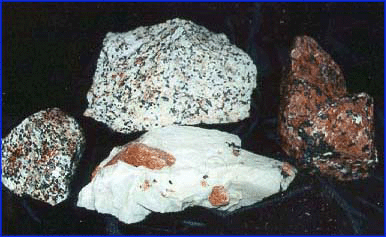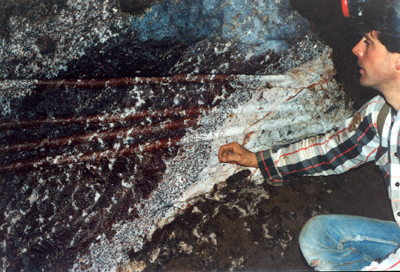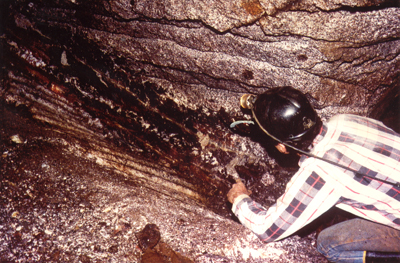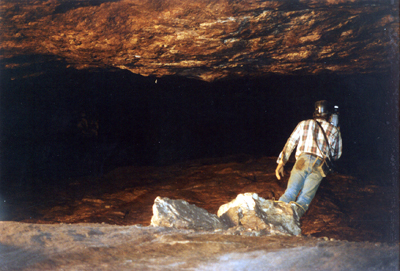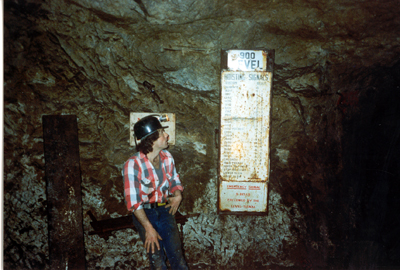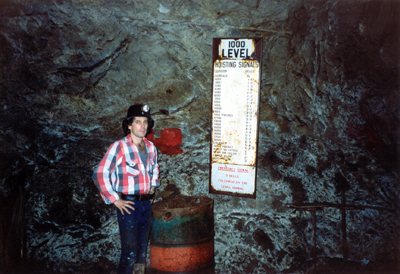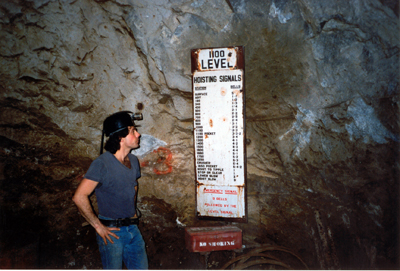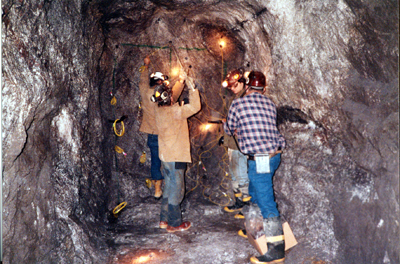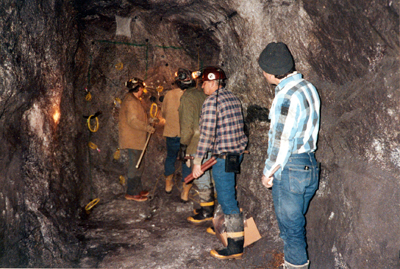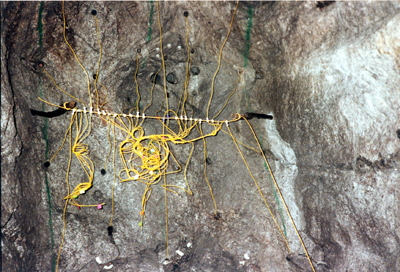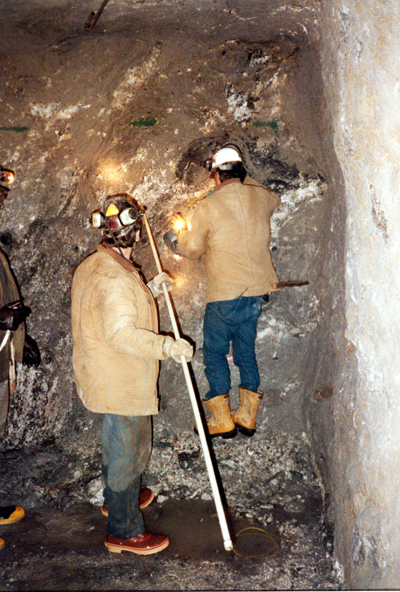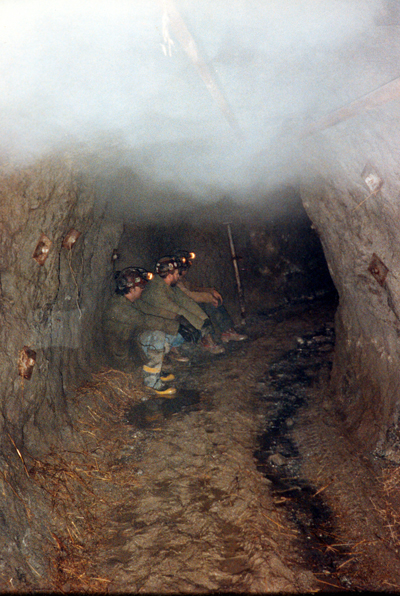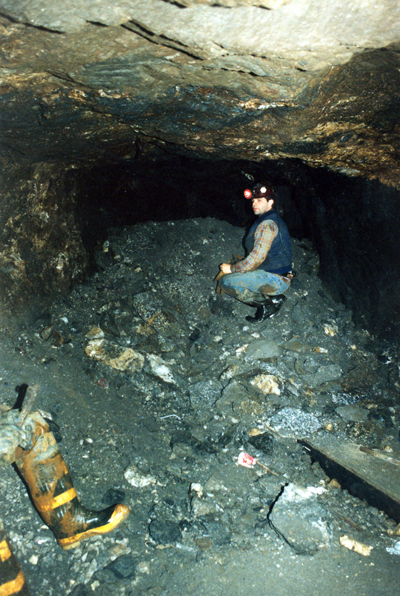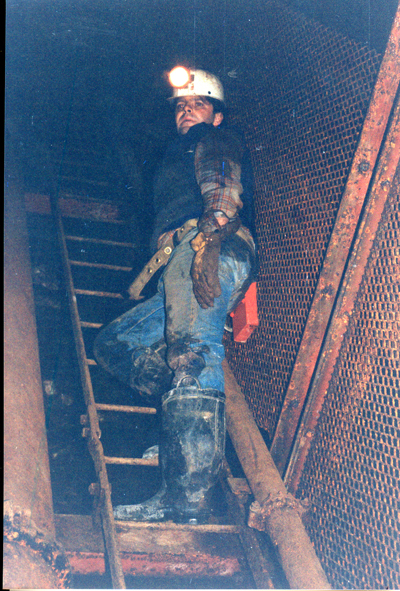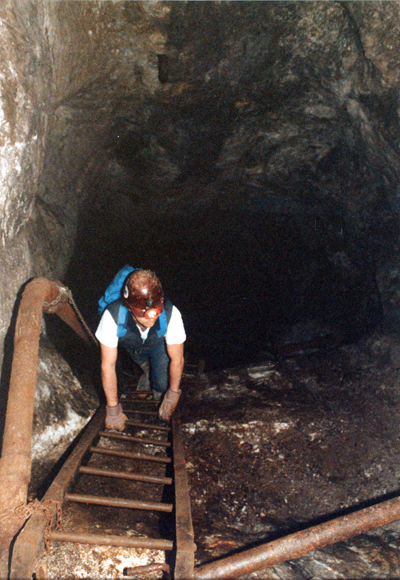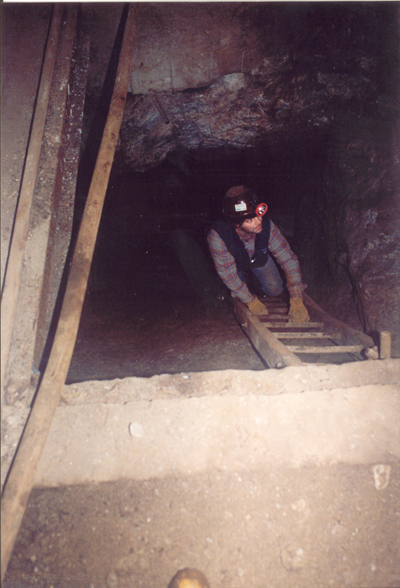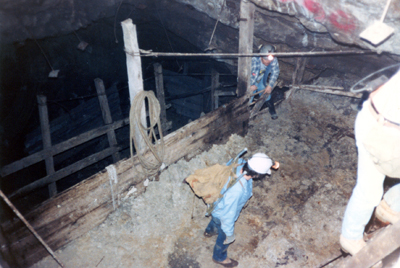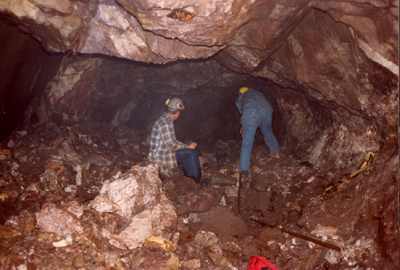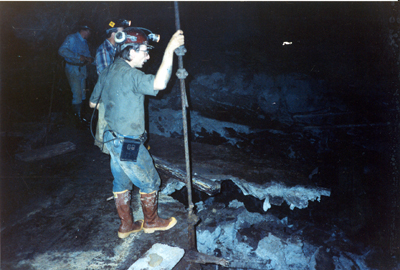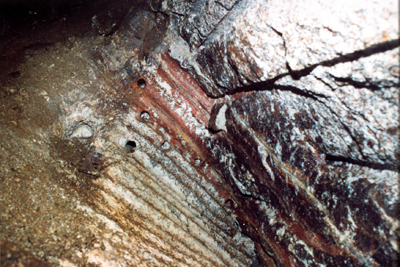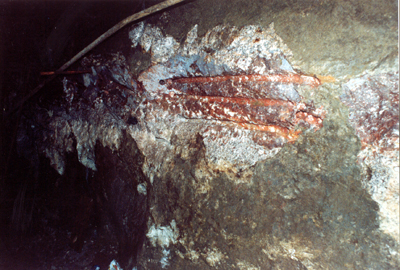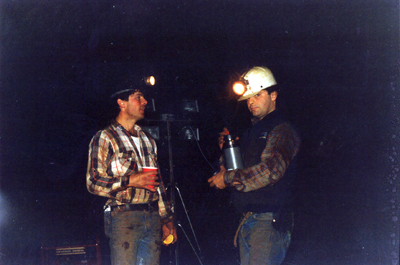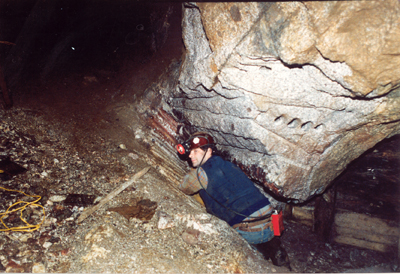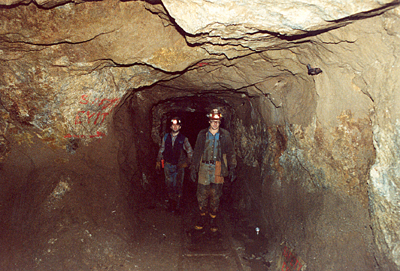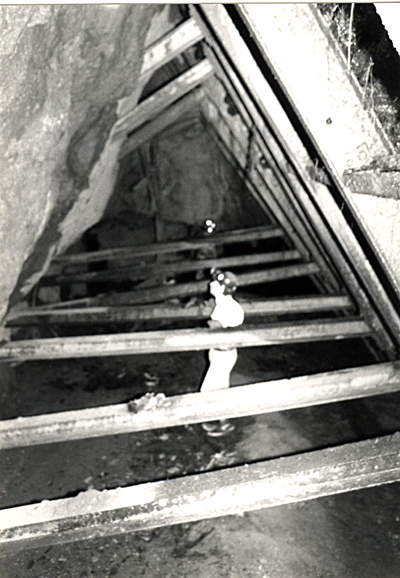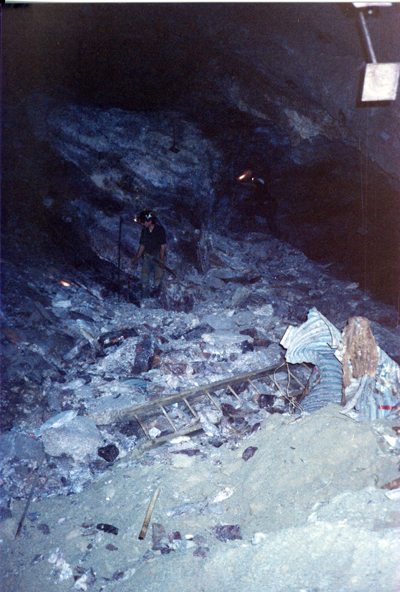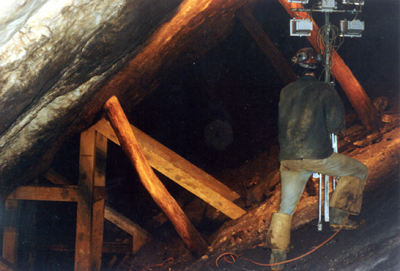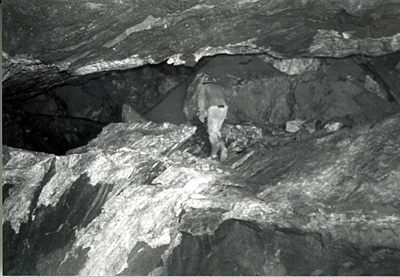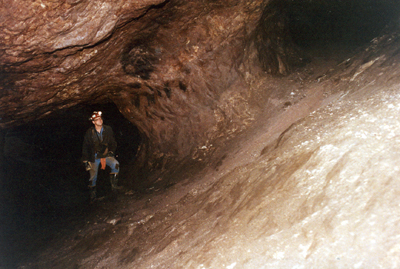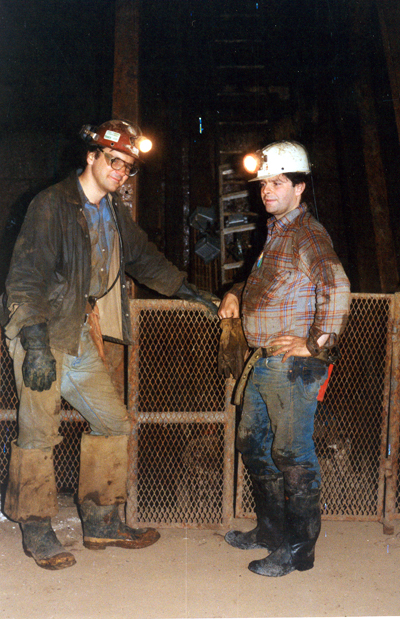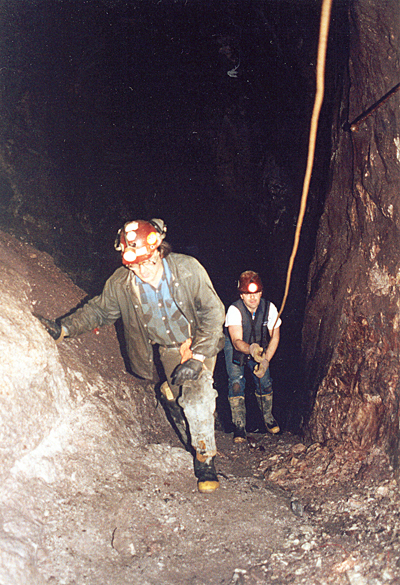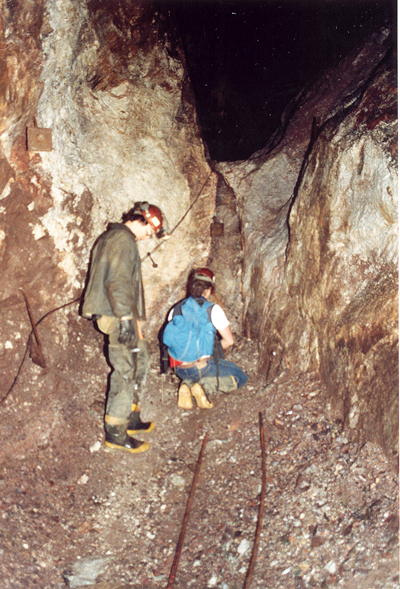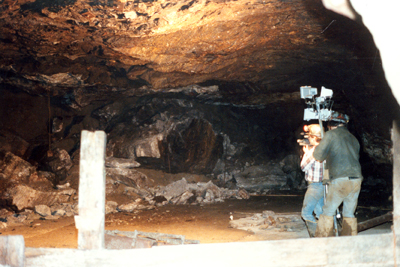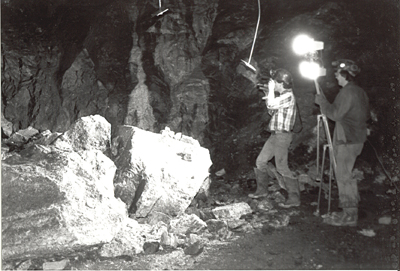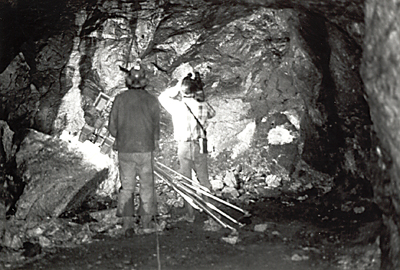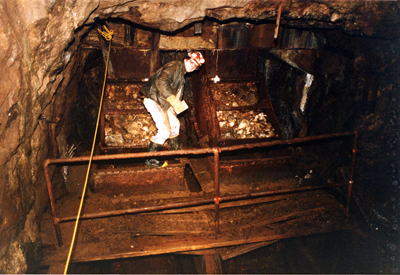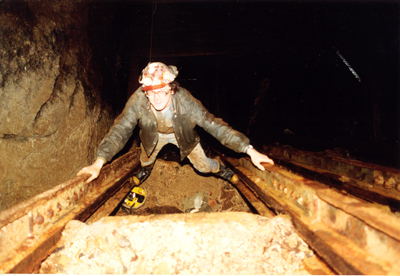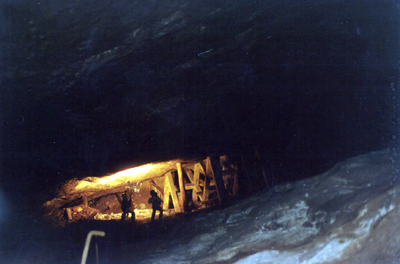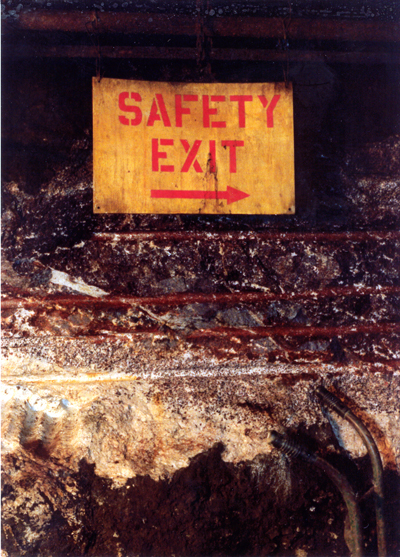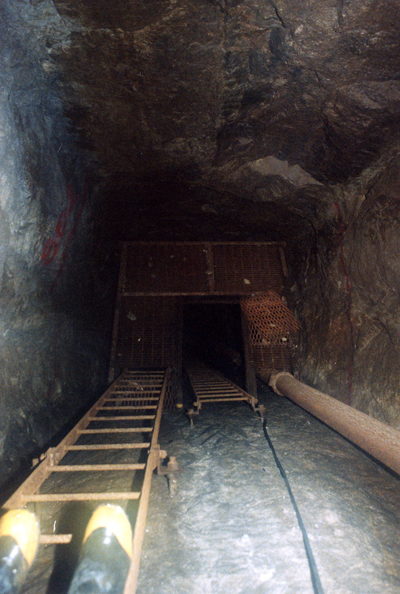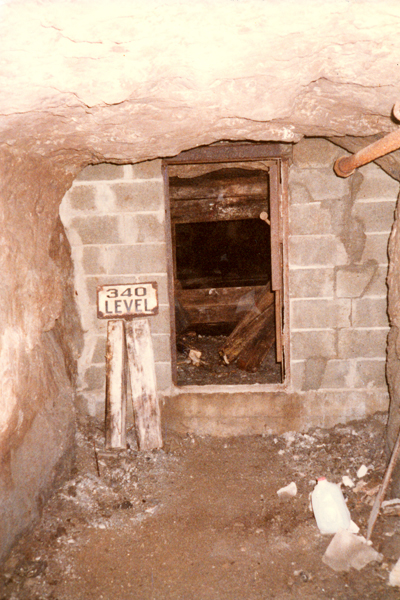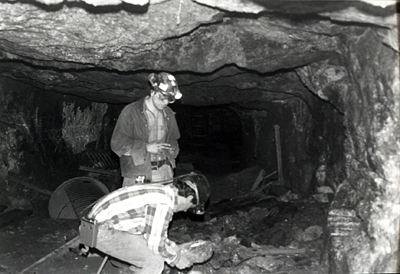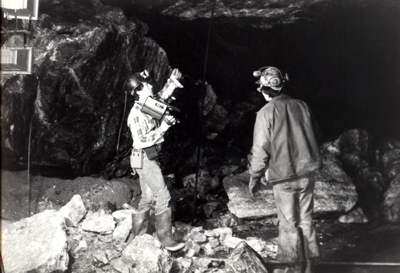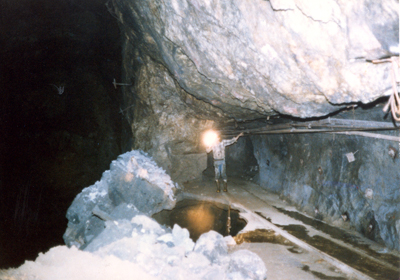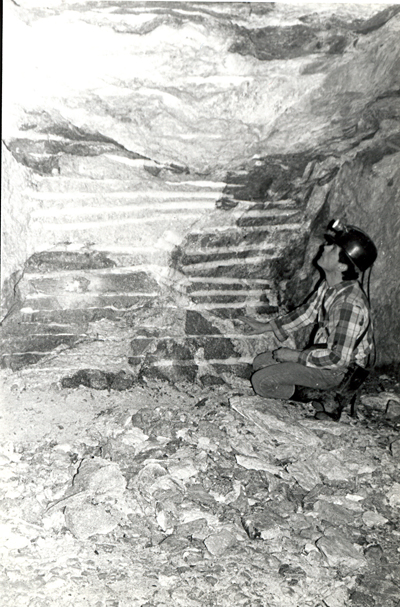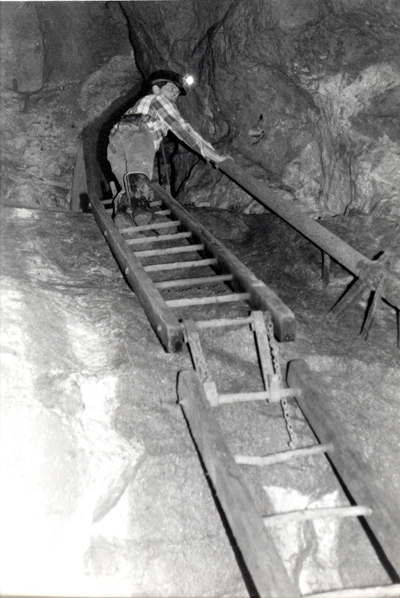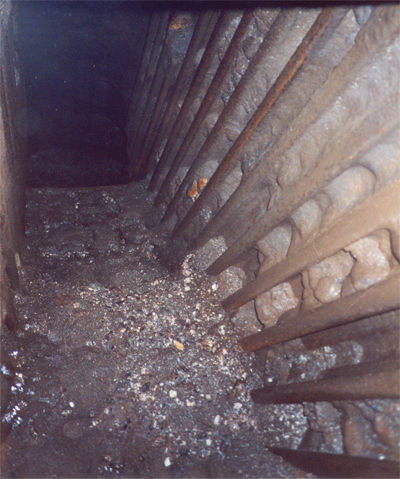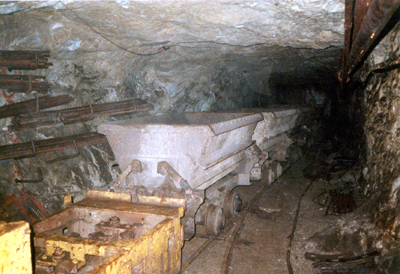|
Sterling
Hill and Franklin Zinc Mines
from
wikipedia ..."The Sterling Hill Mine, now known as
the Sterling Hill Mine Tour & Museum of
Fluorescence, is a former iron and zinc mine in
Ogdensburg, Sussex County, New Jersey, United
States. It was the last working underground mine
in New Jersey when it closed in 1986, and it
became a museum in 1989. Along with the nearby
Franklin Mine, it is known for its variety of
minerals, especially the fluorescent
varieties. It was added to the National
Register of Historic Places in 1991.
Mining
began at the site in the 1630s, when it was
mistakenly thought to be a copper deposit.
George III of the United Kingdom granted the
property to William Alexander, titled Lord
Stirling. Stirling sold it to Robert Ogden in
1765. It went through several owners until the
various mines were combined into the New
Jersey Zinc Company in 1897. The mine closed
in 1986 due to a tax dispute with the town,
which foreclosed for back taxes in 1989 and
auctioned the property to Richard and Robert
Hauck for $750,000. It opened as a museum in
August 1990.
Franklin Furnace, also known as the Franklin
Mine, is a famous mineral location for rare
zinc,[1] iron, manganese minerals in old mines
in Franklin, New Jersey, United States. This
locale produced more species of minerals (over
300) and more different fluorescent minerals
than any other location. The mineral
association (assemblage) from Franklin
includes willemite, zincite and franklinite.
During
the mid-to-late 19th century the furnace was
the center of a large iron making operation.
Russian, Chilean, British, Irish, Hungarian
and Polish immigrants came to Franklin to work
in the mines, and the population of Franklin
swelled from 500 (in 1897) to over 3,000 (in
1913).
The
Furnace mine which was adjacent to the actual
furnace, was a 120+ foot vertical shaft just
under Franklin Falls. Other rare minerals
include esperite, clinohedrite, hardystonite,
and others. There are scores of minerals found
only here, such as johnbaumite (an arsenous
apatite), mcgovernite, etc. Sterling Hill, a
very similar zinc orebody, is located a few
miles away in Ogdensburg.
Geology
The
ore bodies at the Sterling Hill mine lie
within a formation called the Reading Prong
massif; the ores are contained within the
Franklin Marble. This was deposited as
limestone in a Precambrian oceanic rift
trough. It subsequently underwent extensive
metamorphosis during the Grenville orogeny,
approximately 1.15 billion years ago. Uplift
and erosion during the late Mesozoic and the
Tertiary exposed the ore bodies at the
surface; the glaciers of the Pleistocene
strewed trains of ore-bearing boulders for
miles to the south, in places creating
deposits large enough to be worked profitably.
In
the area of the Franklin and Sterling Hill mines,
357 types of minerals are known to occur; these
make up approximately 10% of the minerals
known to science. Thirty-five of these
minerals have not been found anywhere else.[9]
Ninety-one of the minerals fluoresce. There
are 35 miles (56 km) of tunnels in the mine,
going down to 2,065 feet (629 m) below the
surface on the main shaft and 2,675 feet (815 m)
on the lower shaft. As of 2017, other than the
very top level of the mine (<100 ft), the
entire lower section has been flooded due to
underground water table and hence no longer
accessible. The mine remains at 56F (13C)
constantly.
Museum
The
tour spends about 30 minutes inside the Exhibit
hall which contains a wide variety of mining
memorabilia, mineralogical samples, fossils,
and meteorites. It then leads into the mine
for a 1,300 feet (400 m) walk on level ground
through the underground mine. The walk goes
through a new 240 feet (73 m) section called
the Rainbow tunnel which they blasted in 1990
using 49 blasts and at a cost of $2 a foot. In
the Rainbow room, short wave UV lights are
turned on to demonstrate the entire tunnel and
various samples glowing with fluorescence. The
mine is also home to the Ellis Astronomical
Observatory, the Thomas S. Warren Museum of
Fluorescence, and a collection of mining
equipment.
The museum periodically arranges public
mineral collecting sessions as well as more
private and behind the scene events for local
geology clubs."
|
